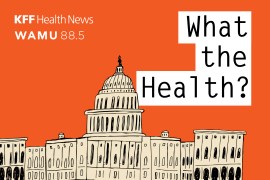
Letters to the Editor is a periodic KHN feature. We welcome all comments and will publish a selection. We will edit for space, and we require full names.
A recent story about the health care workforce, Nurse Practitioners Try New Tack To Expand Foothold In Primary Care (Appleby, 9/8) drew a number of comments. Here is a sampling:
Dr. Edward Volpintesta; Bethel, Conn.
The role of the primary care doctor has changed radically. Trying to partition their time and energy between taking care of patients and dealing with the burgeoning amount of paperwork and phone calls generated by insurance companies, Medicare, Medicaid, home health care agencies and other regulatory entities has created a high rate of burnout among these doctors. Loss of enthusiasm and loss of job satisfaction has stripped from all but the most idealistic any illusions about primary care being a rewarding and fulfilling career. Most primary care doctors spend as much time with administrative duties as they do with actual hands-on care. The pressure to see more patients in order to survive financially combined with the threat of malpractice suits compels these doctors to refer patients quickly at the first sign of difficulty in treatment or diagnosis. So I don’t think the argument that nurses will refer more patients and cost the system more is true. … For this reason the Institute of Medicine recognizes their ability to practice within the scope of their training. And the National Committee on Quality Assurance recognizes their capabilities to lead “medical homes” just like physicians. Clearly, … patients should be given the choice to decide whether they want to see a nurse practitioner or a primarycare doctor for their primary care needs.
Steve Rooney, RN; President, National Federation of Nurses and Oregon Nurses Association; Bend, Ore.
The article points out that by opposing nurse practitioner independent practice and opposing laws that would allow NPs to practice and bill independently, [medical associations] are helping create a primary care provider shortage. This is the real shortage, not a shortage of physicians. We all know a team approach will provide better health care and better outcomes. One significant problem is that the group that wants to lead the team doesn’t want the players to perform to the best of their abilities. Another problem is that physicians and others in power believe that physicians are best suited to lead the team. Given that they don’t play well with others and don’t share power well, and that they focus on curing disease, not providing health care, there is no way that we can provide the most cost effective, quality care with the current power structure.
Readers like this one also responded to the story, Health Law Adds New Expense For Farmers: Insurance For Field Workers (Varney, 8/21).
David Lane Fear Sr.; Shepler & Fear General Agency; Roseville, Calif.
Our agency has met with over 250 farm labor contractors in the past six months and explained what they can and cannot do to meet the requirements. One issue that seems to be haunting them is that although a farm labor contractor might offer “affordable” coverage to his full-time workers, most will waive it and pay the penalty. But the farm labor contractor cannot find a carrier who will issue them a group health contract to offer coverage to workers because they cannot meet the carrier’s participation requirements. So the contractors are caught in the middle. While there are some who will waive participation (such as popular HMO plans), they are generally not available in rural/farm areas. It’s a real problem. … We think one solution is to offer guaranteed issue individual plans billed through the employer group.
The story, Survey: Big Business May Shift Retirees, Part-Timers To Insurance Exchanges (Hancock, 8/28), also drew strong reactions – like the following:
Joel Stegner; Edina, Minn.
The word “shift” is wrong – the correct word is force. Employers have often negotiated benefits, particularly with seniors, that are supposed to be permanent. Employees and retirees will have no choice, because the laws protecting workers from arbitrary employee action are practically non-existent. All the other research indicates that many employers intend to cut hours so they can avoid paying the benefits that they pay their executives. It used to be that companies had difficulty providing extra benefits to executives and withholding basic benefits from employees. In our pro-business, anti-worker environment … large profitable companies are able to erode the compensation they provide to employees with no consequences.
Another reader commented on the story, Bare Bones Health Plans Expected To Survive Health Law (Hancock and Appleby, 8/26).
Ken Holderbaum; Managing Partner, Key Benefit Resources; Dallas, Texas
Your article was interesting in as much you misunderstand the nature of limited medical plans and the people who need them. Limited medical plans were always considered temporary coverage used as transition coverage until the individual could qualify for full-time work and major medical coverage. Your article makes the same error all news stories make when discussing limited medical plans… You compare a limited medical plan to a major medical plan instead of comparing [it] to no coverage at all. Limited medical plans were never designed to replace major medical plans but to offer basic out-patient coverage to employees who did not qualify for major medical coverage. … And, these are the folks who without a limited medical policy in many instances would not take their child to the doctor because of a cold or flu that could turn into something more serious if not treated. Why does your article not discuss what the FEDS consider minimal essential coverage? [These plans] cover only preventive issues and, when compared to a limited medical plan, offer no protections for treating the illnesses at all. … No, limited Medical plans are not the ideal option but they do have their place.
Finally, these two readers offered some editing advice:
David M. Sage; Tampa, Fla.
Throughout the story [Costliest 1 Percent Of Patients Account For 21 Percent Of U.S. Health Spending (Boodman, 10/7)] you refer to “patients.” So who are these patients? Are they the entire population of the country or just those who have been in hospitals? Maybe you could clear this up by saying “Three million people account for 21 percent of US health spending.”
Susan M. Pettey; Alexandria, Va.
This is a request to your writers: Please refer to the new federal health insurance law by its proper name: The Affordable Care Act. Calling it “Obamacare” perpetuates the partisan dynamic that is paralyzing Congress. I think it is likely that if either Medicare or Medicaid had been labeled “Johnsoncare,” the programs would have been sunk by partisan politics and doomed to failure.
(Editor’s Note: Kaiser Health News’ editorial policy recognizes that “Obamacare” is a well-known term used by both health law supporters and opponents, and it is appropriate to use in KHN articles along with other descriptors, such as “the health law,” “the Affordable Care Act” and “the overhaul.” Because it has become an a part of common speech, we use it in headlines, but not as the first reference in a particular story.)






